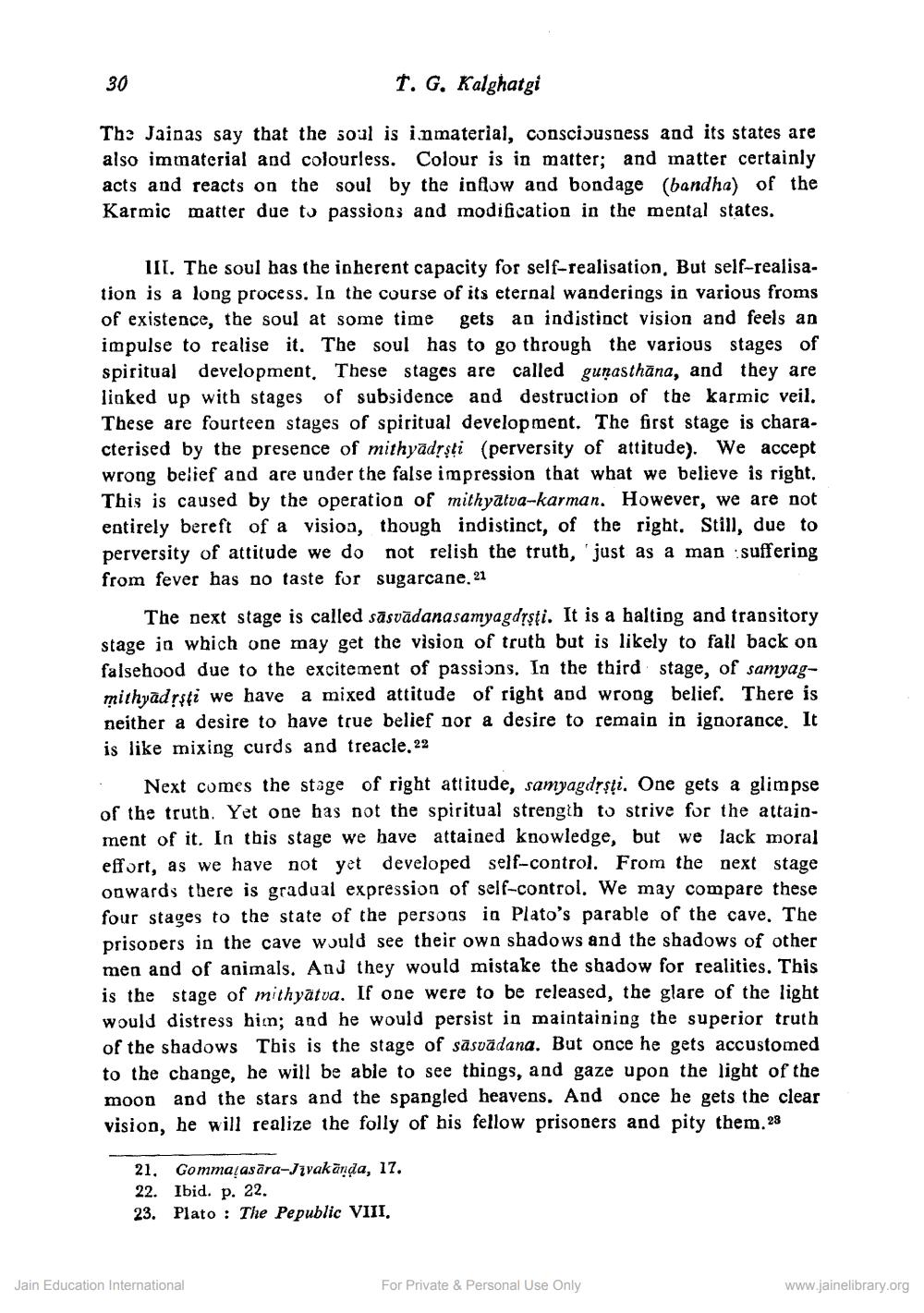________________
30
f. G. Kalghatgi
The Jainas say that the soul is inmaterial, consciɔusness and its states are also immaterial and colourless. Colour is in matter; and matter certainly acts and reacts on the soul by the inflow and bondage (bandha) of the Karmic matter due to passions and modification in the mental states.
III. The soul has the inherent capacity for self-realisation. But self-realisation is a long process. In the course of its eternal wanderings in various froms of existence, the soul at some time gets an indistinct vision and feels an impulse to realise it. The soul has to go through the various stages of spiritual development. These stages are called gumasthāna, and they are linked up with stages of subsidence and destruction of the karmic veil. These are fourteen stages of spiritual development. The first stage is chara. cterised by the presence of mithyādssti (perversity of attitude). We accept wrong belief and are under the false impression that what we believe is right. This is caused by the operation of mithyatva-karman. However, we are not entirely bereft of a vision, though indistinct, of the right. Still, due to perversity of attitude we do not relish the truth, just as a man suffering from fever has no taste for sugarcane 21
The next stage is called sāsvādanasamyagdrsti. It is a halting and transitory stage in which one may get the vision of truth but is likely to fall back on falsehood due to the excitement of passions. In the third stage, of samyagmithyadrsti we have a mixed attitude of right and wrong belief. There is neither a desire to have true belief nor a desire to remain in ignorance. It is like mixing curds and treacle.22
Next comes the stage of right attitude, samyagdȚşți. One gets a glimpse of the truth. Yet one has not the spiritual strength to strive for the attainment of it. In this stage we have attained knowledge, but we lack moral effort, as we have not yet developed self-control. From the next stage onwards there is gradual expression of self-control. We may compare these four stages to the state of the persoas in Plato's parable of the cave. The prisoners in the cave would see their own shadows and the shadows of other men and of animals. Ani they would mistake the shadow for realities. This is the stage of mithyātva. If one were to be released, the glare of the light would distress him; and he would persist in maintaining the superior truth of the shadows This is the stage of sāsvādana. But once he gets accustomed to the change, he will be able to see things, and gaze upon the light of the moon and the stars and the spangled heavens. And once he gets the clear vision, he will realize the folly of his fellow prisoners and pity them. 28
21, Gommaļasāra-Jivakānda, 17. 22. Ibid. p. 22. 23. Plato : The Pepublic VIII.
Jain Education International
For Private & Personal Use Only
www.jainelibrary.org




